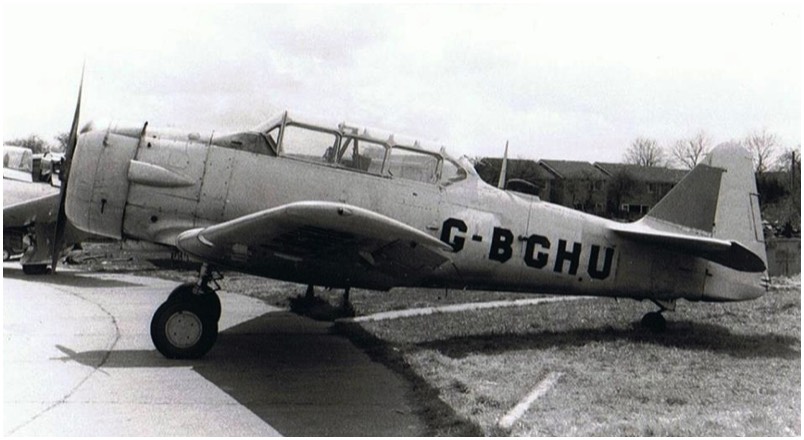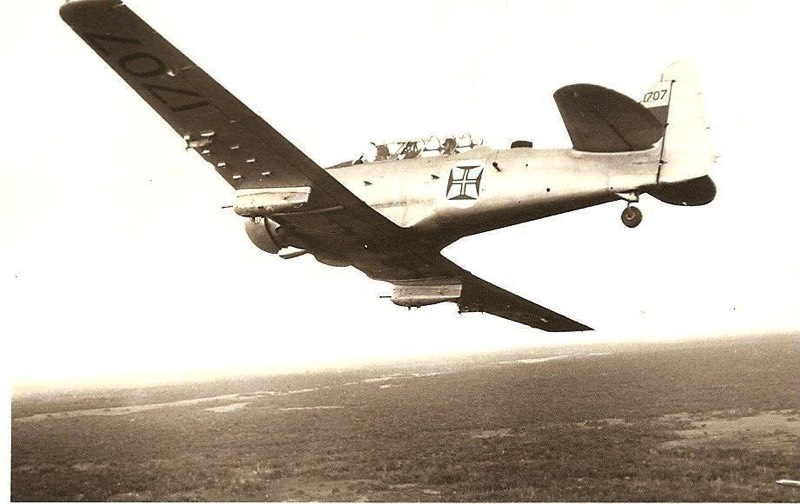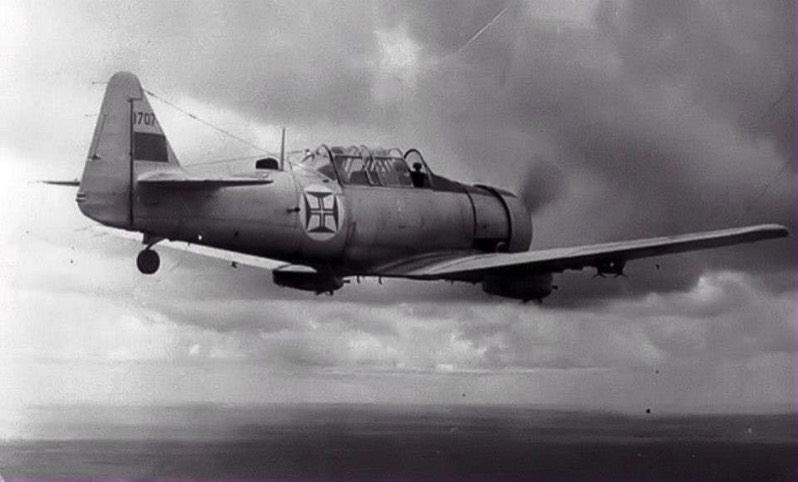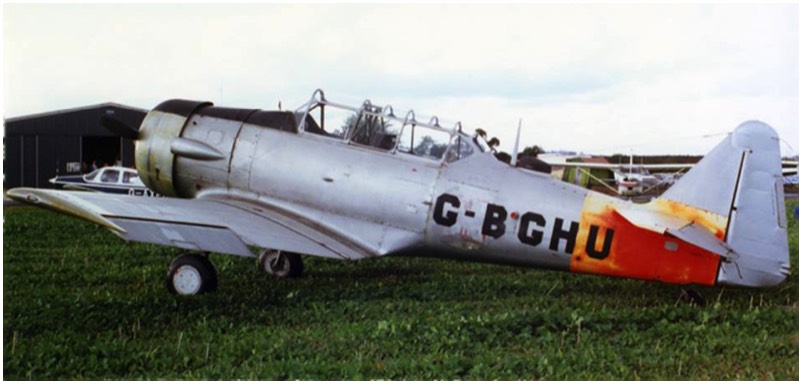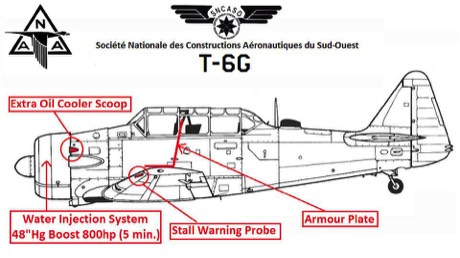T6G Texan TA-042 registered as Harvard G-BGHU
G-BGHU had many upgrades
1941 – Constructed as AT-6C with wooden rear fuselage and tail to save strategic materials.
1943 – Standard full metal fuselage applied.
1950 – Upgraded to T-6G configuration by North American Aviation.
HISTORY
1942 – 1950 – Served with the USAAF
1952 – 1961 – Sold to the French Air Force and converted to COIN configuration. Service in Algiers
1961 – 1975 – Sold to the Portuguese Air Force. Service in Angola. Serial 1707
1975 – 1978 – Service in Portugal as a standard trainer
1978 –1979 – wfu at Portuguese Air Force
1979 – 1979 – 22nd January Gladaircraft Co Ltd. Biggin Hill
1979 – 1981 – 6th May Delivered to Biggin Hill
1981 – 1986 – 12th November Phillip S Warner, Wllsbourne Mountford
1986 – 2015 – 29th December – Purchased by the current owner, Chris Bellhouse and based at Headcorn.
Now at Aero Legends
Kent – Photographs by Barry Burston
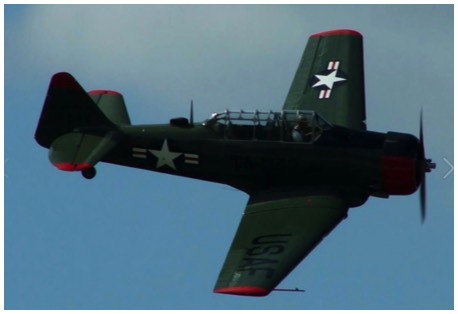 The paint scheme of this aircraft represents a T6G as flown in Korea by the 64th TCGP in August 1950. All markings, numbers etc are as originally worn during its service with the U.S.A.F. In this guise, T6’s were used in the Korean war for forward air control and target marking. They were armed with phosphor rockets and machine guns, although the guns were removed later in the campaign as the pilots spent too much time shooting up targets rather than marking them for others to destroy!
The paint scheme of this aircraft represents a T6G as flown in Korea by the 64th TCGP in August 1950. All markings, numbers etc are as originally worn during its service with the U.S.A.F. In this guise, T6’s were used in the Korean war for forward air control and target marking. They were armed with phosphor rockets and machine guns, although the guns were removed later in the campaign as the pilots spent too much time shooting up targets rather than marking them for others to destroy!
Portuguese Air Force service as 1707 in Angola
G-BGHU in her Portuguese Air Force Colours as PoAF 1707.
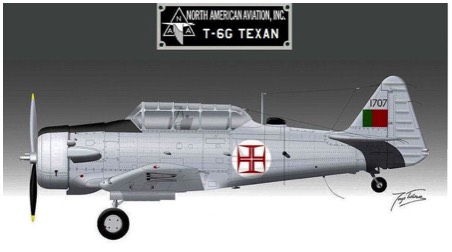
It was stationed at AB.3 Negage and AB.4 Henrique de Carvalho in Angola. It returned to BA.7 Aveiro, Portugal before wfu in 1978.
All ex-French T-6G and all ex-German Harvard 4 were COIN. (Counter Insurgency) The only series never armed in Portugal were SNJ-4 and the MDAP T-6G
All information on the Portuguese history was obtained by Joao M. Vidal A former pilot of 1707
Supply T6 just landed with. The fuel jumped to the hood of the engine. The Mechanic was evacuated with severe burns.
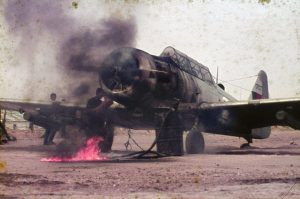
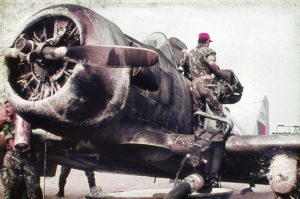

Ready for action!
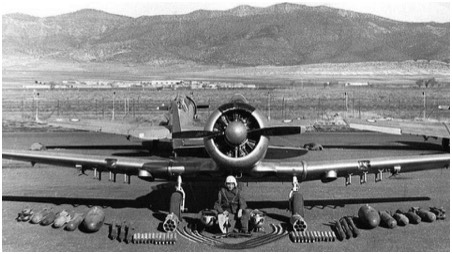
Of these aircraft, 56 were exported to the Portuguese Air Force (PoAF serials 1670 to 1725) of which the following 4 were exported to the UK after the type was wfu: 1681 c/n: 182-694 USAF s/n: 51-15007 G-BSBD – This aircraft did not come directly to the U.S. but came with G-BSBF 52-8590 and Harvard IV 53-4636 from England to Harry Zerby, FMZ Restorations, Inc. PA USA.
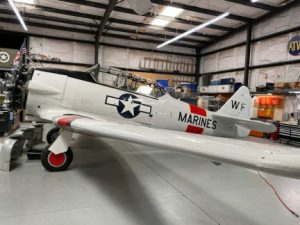 Left – 51-15007 G-BSBD.
Left – 51-15007 G-BSBD.1710 c/n: 182-750 USAF s/n: 51-15063 G-SURF / N8048J
1715 c/n: 182-029 USAF s/n: 51-14342 G-BIHS / N4434M
The T6-G
The French upgrade happened before joining the PoAF. This upgrade consisted of a Water injection system to the P&W R-1340-AN1 increasing the power from the standard 600hp @36” Boost to 800hp @48” Boost limited to 5 minutes continuous.
– Extra oil cooler – Stall warning system – Armour plate protection for the pilot – Weapons ensemble
They were reverted back to the standard T-6G when in service with the PoAF, however, the extra scoop was never removed
G-BGHU on arrival in the UK from the Portuguese Airforce – 1979
